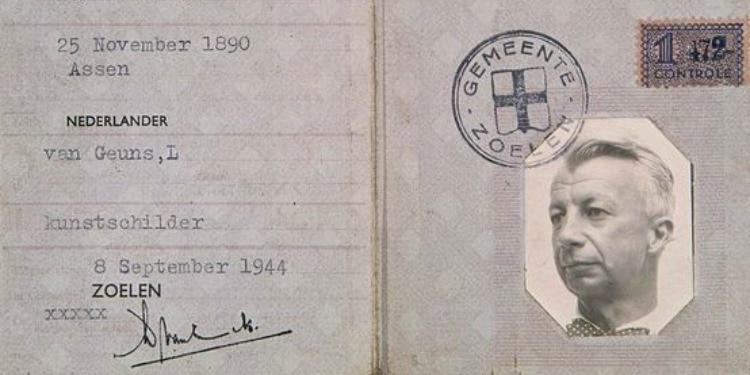Right at the Museum
The Fellowship | May 1, 2019

Willem Sandberg
(1897-1984)
When the Nazis invaded the Netherlands and began persecuting the country’s Jews, the man who curated Amsterdam’s Stedelijk Museum realized he had more historic tasks than simply tending to his historic displays. Willem Sandberg had been the museum’s curator since 1938, and had also helped organize the country’s artists to resist the Nazi occupation. But he realized that his artistic skills could be put to a very helpful use.
You see, in order to save Dutch Jews, false identity cards could be forged so that Jewish people could pass as Gentiles, thus saving their lives. Sandberg’s skill at graphic design and his knowledge of printing were crucial to getting this enterprise of righteous forgery going.
With his artistic friends, Sandberg forged thousands of ID cards. Producing the cards in the museum’s basement and passing them out from his office, Sandberg supplied Jews like Dorothea Hertz-Loeb with the papers that would save their lives.
In the summer of 1942, the Nazis began deporting Jews to concentration camps. Sandberg and his movement of resisting artists decided that the Nazis’ Population Registration office — from which the deportations were carried out — had to be destroyed. The Nazi building was heavily guarded, but Sandberg helped plan the attack that would set fire to it and stored the explosives in his own home. After months of secret planning, the resistance successfully attacked the building on March 27, 1943.
Of course the Nazis were furious at the attack and began hunting down those responsible. Thirteen men were arrested and executed that July. Sandberg’s own wife and son were arrested and jailed, but Willem was not home when the Nazis searched his house — he was at the sand dunes of the North Sea where his city’s art treasures were being hidden from the pillaging Germans.
For the rest of the war, Sandberg hid in the countryside, using his own grandfather’s identification as a ruse and spreading rumors that he had escaped to Switzerland to throw the Nazis off his trail. Even in hiding, he helped the effort against the Nazis, surveilling and communicating nearby Nazi troop movements to the Allies.
After the war, Sandberg worked as director of the museum until 1963, helping grow its acclaimed collection of contemporary art. That year, he was invited to Jerusalem where he worked as director of the new Israel Museum until 1968, the same year he was finally recognized as Righteous Among the Nations for all he had done to help the Jewish people.
